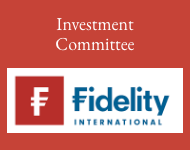For this month’s Three-year track record article, Darius McDermott, managing director of FundCalibre, looks at the Jupiter Monthly Income Bond fund, which uses a bottom-up approach aiming at spreads with relatively low volatility.
Heavyweight boxer Muhammad Ali famously said that “a man who views the world the same at 50 as he did at 20 has wasted 30 years of his life.”
Being a long-term investor is no different, learning over time is part of getting better at it. For example, after the Global Financial Crisis, many investors realised the harsh lesson they were taught and sought safer, more regulated assets, but also looked for higher returns through dividend-yielding portfolios.
I remember distinctly the idea of a defensive strategy, offering an income of around 4%, being seen as some sort of silver bullet solution. It led to the rise of many new strategies which sought to meet this lofty goal.
The reality is silver bullet solutions are often hard to achieve and that flexibility is also key in being successful over the long term. Hence why multi-asset income funds – as well as strategic bond funds – have fared so much better than the likes of absolute return funds in meeting these more defensive requirements of investors.
This brings me to this month’s fund. A portfolio that in the manager’s own words is “not too clever” by using a bottom-up approach to harvest spreads with relatively low volatility.
In many ways the Jupiter Monthly Income Bond fund is the type of portfolio many in the post-GFC era could have easily gravitated towards. Having been managed by Hilary Blandy for the past five years, it has returned 24.2% to investors, more than double the average fund in the IA Strategic Bond sector (10.1%)* – it has also been one of the least volatile funds in the sector in recent years.
It is the simplicity of the portfolio that we like. The fund invests in a blend of investment grade and high yield bonds, with a short-duration bias. It is primarily a bottom-up portfolio.
The fund has a number of ways of generating outperformance, including a flexible allocation between investment grade and high yield; sector and regional allocation across developed markets; and individual bond selection.
Hilary believes that the mix of investment grade and high yield bonds, combined with short duration, reduces drawdowns and boosts risk-adjusted returns. The fund’s duration is typically between 2-4 years. The preference for short duration bonds is because returns can be forecasted with greater confidence.
The fund has a large and experienced credit research team hunting for the best ideas. There is a close collaboration between analysts and fund managers with a very flat hierarchy.
The process typically begins with a macroeconomic outlook, which also includes an analysis of general valuations, technical factors and sentiment. This then leads to thematic views and particular themes and sectors. This is then always supplemented with fundamental bottom-up credit research. This will include a detailed analysis of a company’s capital structure, cash flow modelling and an in-depth covenant review. This is further supplemented by company visits and external research. They look for value in the bonds they buy and they also like to have a catalyst which can drive capital appreciation.
When selecting a bond, the team look for companies with a high degree of predictability – with a heavy emphasis on downside protection.
The fund is well diversified with around 150 positions in the portfolio. The fund’s neutral position is 50% short duration investment grade and 50% high yield. Typical exposure for each is between 40% and 60%.
Hilary says the fund is currently slightly underweight duration (2.4 vs. 2.7 years). This can, and has, moved around in the past when she sees big themes. She says: “I move it when I use it as a hedge because I am very worried about something happening or when the market has moved too far in terms of what it has priced in. The bar for major movements is quite high, but then it moves naturally because of the underlying credit choices.”
Hilary says spreads on high yield remain pretty tight – but feels that on a granular level (for example looking at euro B/BB grade) there is still some value.
She says: “We don’t have our foot on the gas in terms of capturing more upside in terms of spreads, but I don’t think they are crazy tight. What I want to own in high yield is high conviction credit and as much as I can in short-dated carry trades. Where I haven’t been able to find that kind of paper I’ve been looking at more defensive BB than I usually would.”
“The overarching style is towards quality – we want credits that won’t default, while others may be more open to a distressed name which they feel is too cheap but may restructure. We tend to avoid that scenario,” Hilary says.
The fund currently yields 6.6%, which is a fair amount above the risk-free rate on 10-year UK government bonds. Hilary says: “We are very much an income offering that is gradually trying to accrue that yield, but by taking as little risk as possible, that approach has worked in a number of environments. But we are ready to be flexible when we need to be.”
We like the fund’s simple, short-duration approach as it reduces both volatility and risk. Even if credit spreads and/or interest rates rise, the fund’s short-duration nature means it can quickly reinvest maturing cash at new rates. Hilary is a highly experienced manager and she has done a great job with this fund so far. The monthly income payment is also a nice feature and, when combined with the fund’s yield, makes this an attractive option for income seekers.
*Source: FE Analytics, total returns in pounds sterling, 14 October 2020 to 14 October 2025
Past performance is not a reliable guide to future returns. You may not get back the amount originally invested, and tax rules can change over time. Darius’s views are his own and do not constitute financial advice
Main image: jr-korpa-9XngoIpxcEo-unsplas
































